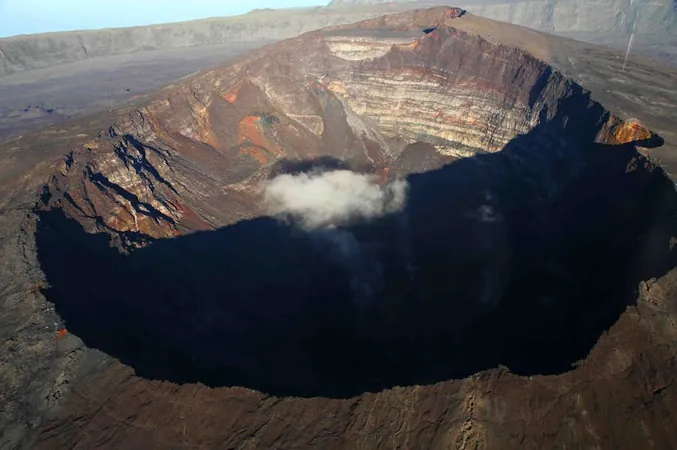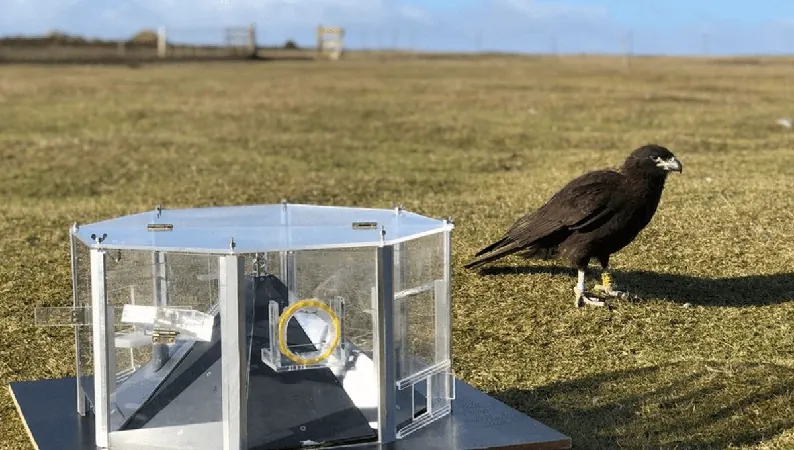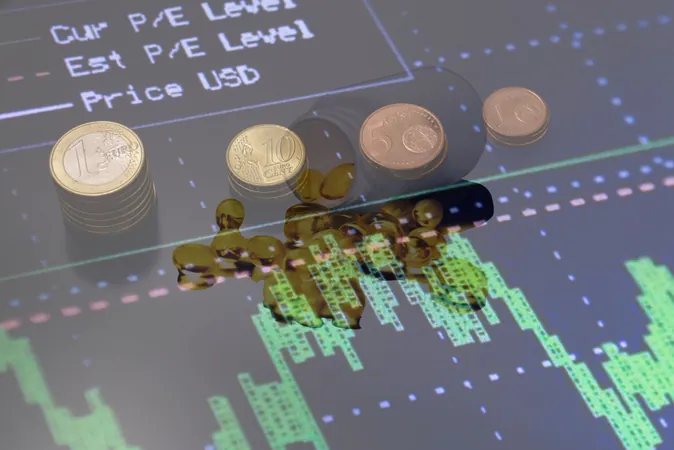
Understanding the Eruption of Mauna Loa and its Travel Implications: A Geologic Marvel Unveiled
2024-11-13
Author: Arjun
Introduction
The eruption of Mauna Loa, the world’s largest active volcano, in November 2022 marked a significant geological event after nearly four decades of dormancy. Recent research has shed light on the processes that led up to this eruption, providing vital information for not only scientists but also travelers and tourism operators in volcanic regions.
The Warning Signs
Located on Hawaii’s Big Island, Mauna Loa began displaying warning signs of its imminent eruption approximately 60 days before it occurred. The Hawaiian Volcano Observatory detected a series of small earthquakes and observed ground swelling, both indicative of magma moving toward the surface. Thanks to this early detection, authorities were able to alert residents and tourists, significantly reducing potential dangers.
Understanding Volcanic Behavior
A pivotal study published in *Nature Communications* has revealed that large volumes of magma migrated from depths of 1.9 to 3 miles (3 to 5 kilometers) beneath Mauna Loa's summit to less than a mile (2 kilometers) below the surface about 70 days before the eruption. This timeline correlates with the geophysical signs recorded by scientists, providing a clearer picture of volcanic behavior.
Erik Klemetti Gonzalez, a volcano expert, notes that understanding volcanoes requires piecing together subtle clues, such as increased seismic activity and alterations in ground elevation. Kendra Lynn, a research geologist and co-author of the study, emphasizes that the rising magma generates pressure that swells the ground and instigates small earthquakes. When this pressure exceeds safe limits, the magma breaches the surface, leading to an eruption. Understanding these dynamics is essential for refining predictive capabilities regarding future volcanic events.
Implications for Travel and Tourism
The eruption of Mauna Loa serves as a crucial reminder of the need for vigilant monitoring of active volcanoes in major tourist destinations. The majority of the United States’ most active volcanoes are located in regions such as Hawaii and Alaska, making it vital for travel operators and visitors to stay abreast of potential volcanic hazards.
Volcanic tourism draws millions every year, and ensuring traveler safety relies heavily on accurate forecasting. From exploring the Big Island’s lava fields to witnessing volcanic phenomena in places like Iceland and Indonesia, these experiences can be thrilling but fraught with risks if proper safety measures are overlooked.
The Role of Scientific Research
Ben Andrews, at the Smithsonian Institution, likens volcanic forecasting to weather predictions, spotlighting that scientists utilize historical data and current observations to inform their assessments. The enhanced understanding of magma movement provides researchers with the tools to improve eruption predictions, thus lessening risks for locals and visitors.
With around 585 active volcanoes worldwide, each presents unique challenges for monitoring and forecasting volcanic activity. Analyzing data from previous eruptions enables scientists to identify warning patterns that may indicate an increased risk of activity, bolstering safety protocols and promoting sustainable tourism practices.
Future Research and Collaboration
The insights from the Mauna Loa eruption can be invaluable for future research. “Recognizing patterns will elevate our expectations for future volcanic conditions,” adds Klemetti Gonzalez. This increasing knowledge greatly assists geologists as they develop models and communicate effectively with local authorities and travel operators.
Adventure and Nature Lovers
Notwithstanding the inherent dangers, volcanic regions continue to attract adventure enthusiasts and nature lovers, with Hawaii’s Big Island boasting popular sites like Mauna Loa and Kilauea. Similar destinations such as Italy’s Mount Etna, Japan’s Mount Fuji, and Iceland’s Eyjafjallajökull are also magnets for travelers seeking breathtaking views and geological intrigue.
Conclusion
For travel companies, maintaining awareness of volcanic activity and developing flexible travel plans is crucial to mitigate danger while enhancing visitor experiences. Local governments play an essential role in monitoring volcanoes and providing timely information to ensure both residents and tourists are informed and safe.
In summary, the eruption of Mauna Loa in 2022 illustrates the planet's dynamic nature and emphasizes the importance of ongoing collaboration among geologists, local government officials, and the tourism industry. For travelers, understanding volcanic science enriches their journey, transforming a simple visit to an active volcano into a profound connection with Earth’s geological forces. By adhering to expert guidance and safety protocols, tourists can safely and responsibly explore these extraordinary natural wonders.
As scientists continue to advance their understanding of volcanic activity, the insights gleaned from events like the eruption of Mauna Loa will enhance safety and preparedness, making the experience of exploring volcanic regions both thrilling and secure.




 Brasil (PT)
Brasil (PT)
 Canada (EN)
Canada (EN)
 Chile (ES)
Chile (ES)
 España (ES)
España (ES)
 France (FR)
France (FR)
 Hong Kong (EN)
Hong Kong (EN)
 Italia (IT)
Italia (IT)
 日本 (JA)
日本 (JA)
 Magyarország (HU)
Magyarország (HU)
 Norge (NO)
Norge (NO)
 Polska (PL)
Polska (PL)
 Schweiz (DE)
Schweiz (DE)
 Singapore (EN)
Singapore (EN)
 Sverige (SV)
Sverige (SV)
 Suomi (FI)
Suomi (FI)
 Türkiye (TR)
Türkiye (TR)